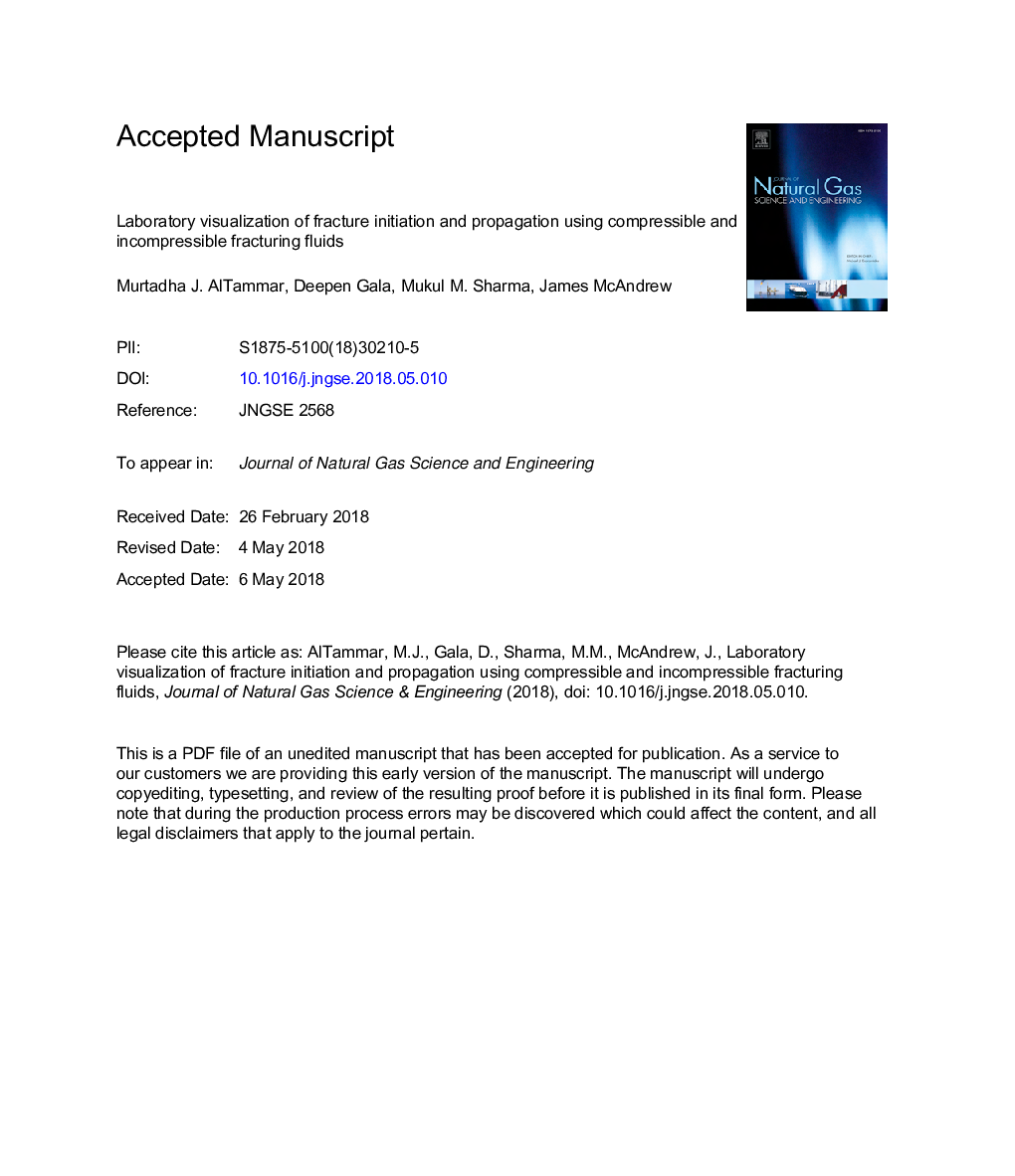| Article ID | Journal | Published Year | Pages | File Type |
|---|---|---|---|---|
| 8128038 | Journal of Natural Gas Science and Engineering | 2018 | 29 Pages |
Abstract
Homogeneous, rock-like materials are fractured in this experimental study using a viscous liquid (glycerin) and nitrogen gas to provide a fundamental insight on the effect of using compressible gases compared to hydraulic fracturing fluids. The fracturing process in the experiments are captured using sequences of high resolution images as well as a novel application of Digital Image Correlation for crack detection. We show that fractures propagate through test specimens in a gradual manner when induced by glycerin at various injection rates. In contrast, nitrogen injection induces instantaneous fractures, which we attribute to its compressible nature and ultralow viscosity. The specimen breakdown pressure is also shown to be markedly lower for nitrogen fractures compared to glycerin fractures. The significantly higher pore pressure distribution and induced tensile stresses associated with nitrogen injection are demonstrated through numerical simulations of the laboratory experiments. Moreover, an experimental evidence of fluid lag when fractures are induced with viscous fluids is provided.
Related Topics
Physical Sciences and Engineering
Earth and Planetary Sciences
Earth and Planetary Sciences (General)
Authors
Murtadha J. AlTammar, Deepen Gala, Mukul M. Sharma, James McAndrew,
